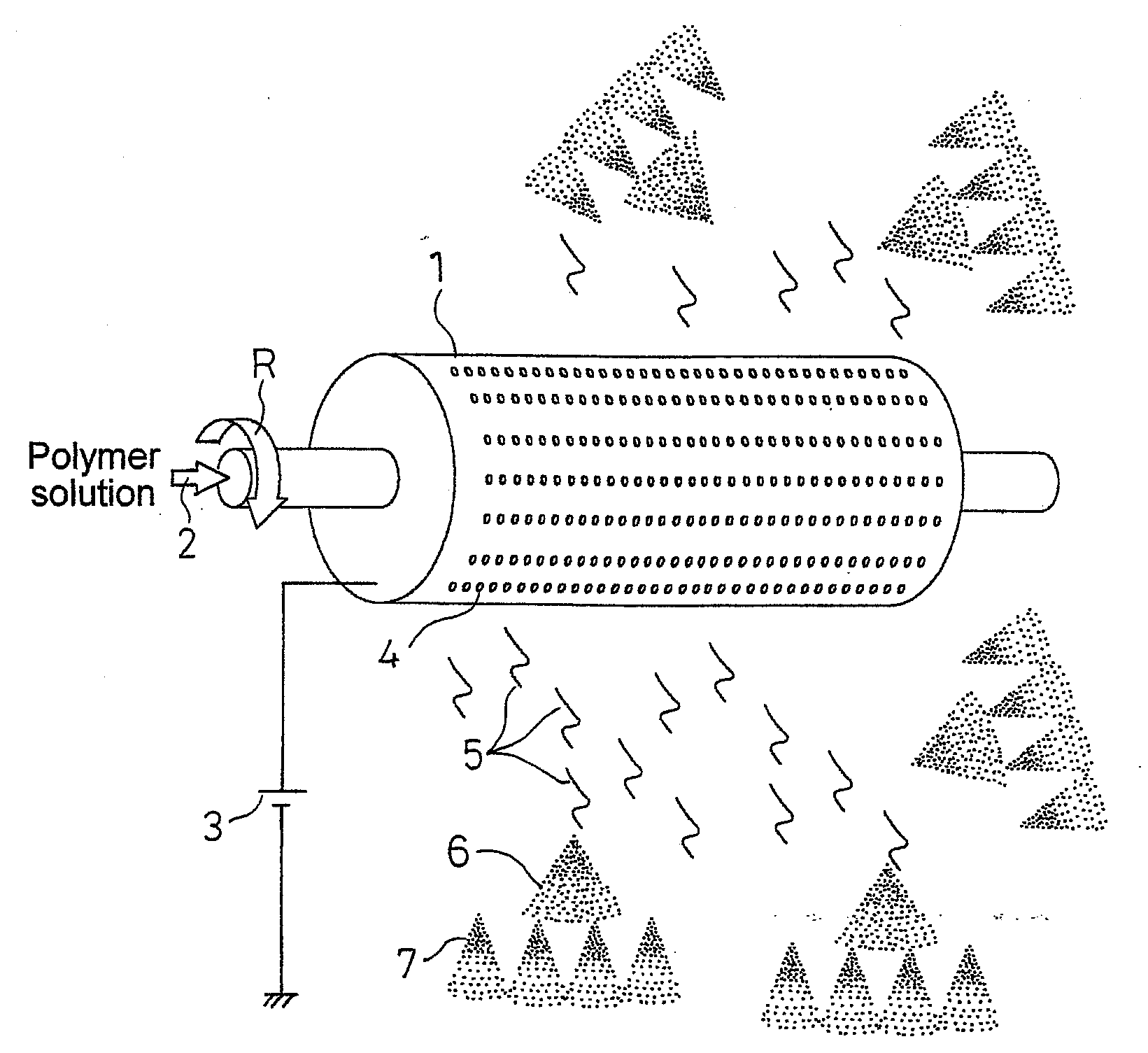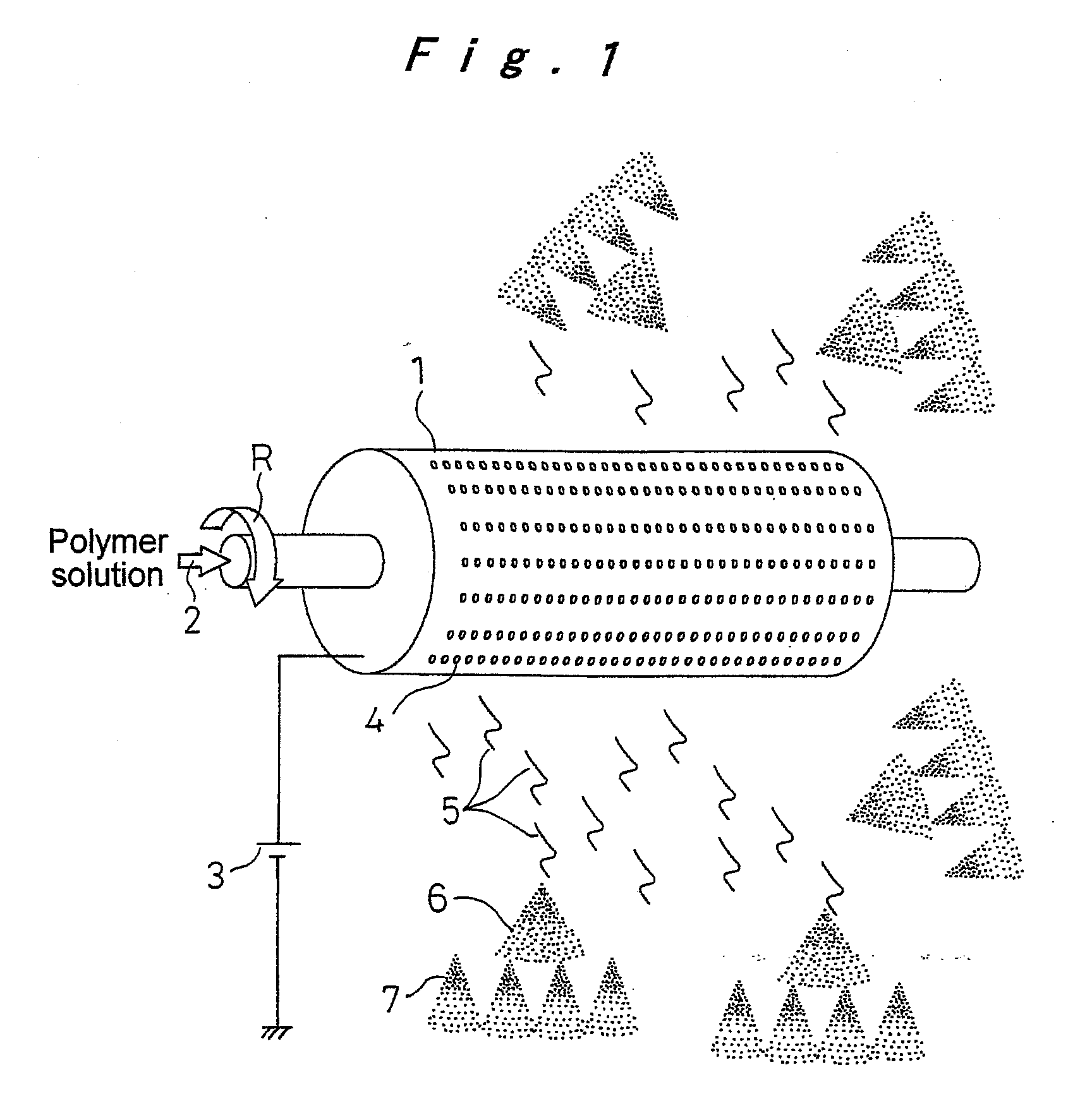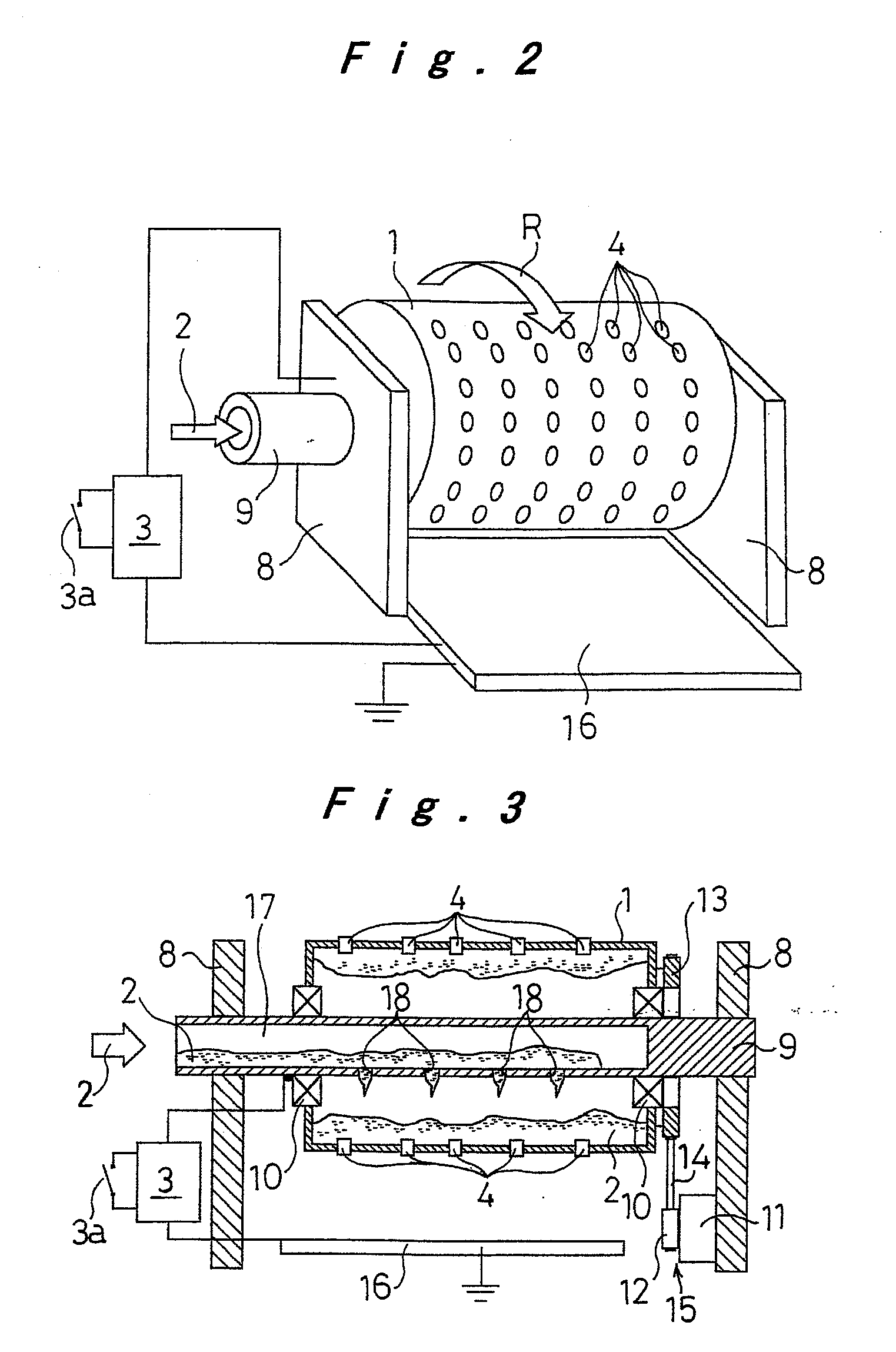Method and apparatus for producing nanofibers and polymeric webs
- Summary
- Abstract
- Description
- Claims
- Application Information
AI Technical Summary
Benefits of technology
Problems solved by technology
Method used
Image
Examples
embodiment 1
[0054]Embodiment 1 of a method and an apparatus for producing a polymeric web will be described with reference to FIGS. 1 to 7B.
[0055]FIG. 1 is an explanatory diagram illustrating a principle of a method for producing nanofibers, the method being applied to a method for producing a polymeric web of the present embodiment. In FIG. 1, reference numeral 1 designates a cylindrical container, as a rotating container, having a diameter of 20 to 500 mm. The rotating container is driven to rotate at a rate of 30 to 6000 rpm about the rotation axis as shown by an arrow R. The rotating container 1 is supplied with a polymer solution 2 from one end thereof. In this instance, the polymer solution is obtained by dissolving a polymeric substance, which is a material for the nanofibers, in a solvent.
[0056]Examples of polymeric substances constituting polymer solution 2 include polypropylene, polyethylene, polystyrene, polyethylene oxide, polyethylene terephthalate, polybutylene terephthalate, poly...
embodiment 2
[0069]Next, embodiment 2 concerning a method and an apparatus for producing a polymeric web of the present invention will be described with reference to FIG. 8. In the following description of the embodiment, the same components as appeared in the preceding embodiment will be designated by the same reference numerals, and descriptions of those components will be omitted while only differences will be described.
[0070]In the above-described embodiment, an example was illustrated where the center shaft 9 was secured on the support members 8, and the cylindrical container 1 is rotatably supported by the bearings 10 around this center shaft 9. However, in the present embodiment, the cylindrical container 1 is secured onto the center shaft 9, and both ends of the center shaft 9 are rotatably supported by the support members 8 with the bearings 10 interposed therebetween as illustrated in FIG. 8. Accordingly, the rotation drive means 15 is configured such that the output shaft of the drive...
embodiment 3
[0072]Next, embodiment 3 concerning a method and an apparatus for producing a polymeric web of the present invention will be described with reference to FIG. 9.
[0073]In the above-described embodiments, examples were illustrated in which a high voltage with respect to the ground potential generated by the high voltage generating means 3 was applied to the cylindrical container 1, with the collector 16 being maintained at the ground potential. However, in the present embodiment, a high voltage that is either positive or negative and generated by the high voltage generating means 3 is applied to the collector 16, and the cylindrical container 1 is grounded through the conductive member 29 and the bearings 10.
[0074]In the present embodiment, too, the polymeric filaments 5 are discharged from the cylindrical container 1 that is maintained at a high voltage either positively or negatively relative to the collector 16. Then, a polymer solution forming these polymeric filaments 5 becomes el...
PUM
| Property | Measurement | Unit |
|---|---|---|
| Electrical conductivity | aaaaa | aaaaa |
| Speed | aaaaa | aaaaa |
| Electric potential / voltage | aaaaa | aaaaa |
Abstract
Description
Claims
Application Information
 Login to View More
Login to View More - R&D
- Intellectual Property
- Life Sciences
- Materials
- Tech Scout
- Unparalleled Data Quality
- Higher Quality Content
- 60% Fewer Hallucinations
Browse by: Latest US Patents, China's latest patents, Technical Efficacy Thesaurus, Application Domain, Technology Topic, Popular Technical Reports.
© 2025 PatSnap. All rights reserved.Legal|Privacy policy|Modern Slavery Act Transparency Statement|Sitemap|About US| Contact US: help@patsnap.com



